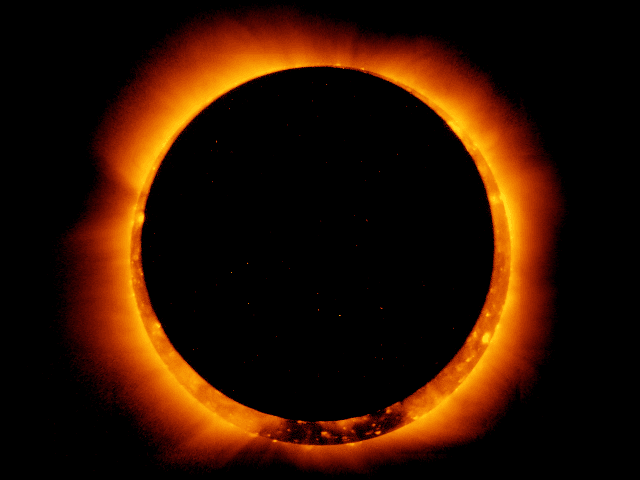Parts of the Western U.S. will see a “very rare” solar eclipse event known as the “Ring of Fire” on Saturday, prompting preparation from California’s electric grid to mitigate solar power loss.
As reported by ABC7, residents of California’s Bay Area and other regions across the western portion of the U.S. will be able to witness an uncommon annular solar eclipse where the sun will appear like a ring of light around the moon. From around 8:oo–11:00 a.m., the moon will partially block the sun.
This upcoming eclipse will be the first of its kind to be visible since June 2021. According to NASA, it will be a very special event.
“A solar eclipse happens when the moon moves directly between the earth and the sun,” NASA Research and Analysis Heliophysics Division Lead Patrick Koehn told the outlet. “With an annular eclipse, the moon is a little bit farther away than it ordinarily might be. So, it doesn’t quite cover the entire disc of the sun and it leaves this ring shape.”
NASA’s Ames Research Center Senior Research Scientist Jon Jenkins emphasized how rare the occasion, colloquially known as the “Ring of Fire,” really is. “This is an opportunity to see a very rare event,” he explained. “And that is, an occasion when the moon is actually between the Earth and the sun from our point of view and can actually get in front of the sun and actually block a large portion of it.”
Because the sun will still be partially visible, viewers will need special eclipse glasses to avoid eye damage while looking at it.
While people get ready to witness a spectacular solar event, the California Independent System Operator (CAISO) is preparing to mitigate power loss.
CAISO, the non-profit operator serving the bulk of California’s electric power system, will have to deal with a “reduced output from grid-scale and rooftop solar generation compared to a normal day,” ABC7 reported.
“We do expect that with the amount of coordination and planning with the stakeholders, we’ll be able to safeguard the reliability of the grid during Saturday’s eclipse,” CAISO Director Of Short Term Forecasting Amber Motley said. “We expect that we will successfully manage all of the loss and return of the solar.”
The operator is planning to analyze how the power grid handles the eclipse in order to prepare for the next one.
According to ABC News, the next total eclipse will occur in April 2024, but then not again until 2044. The next annular eclipse seen in the western part of the country won’t happen until 2046, with the exception of one that will be visible only from Alaska in 2039.

COMMENTS
Please let us know if you're having issues with commenting.